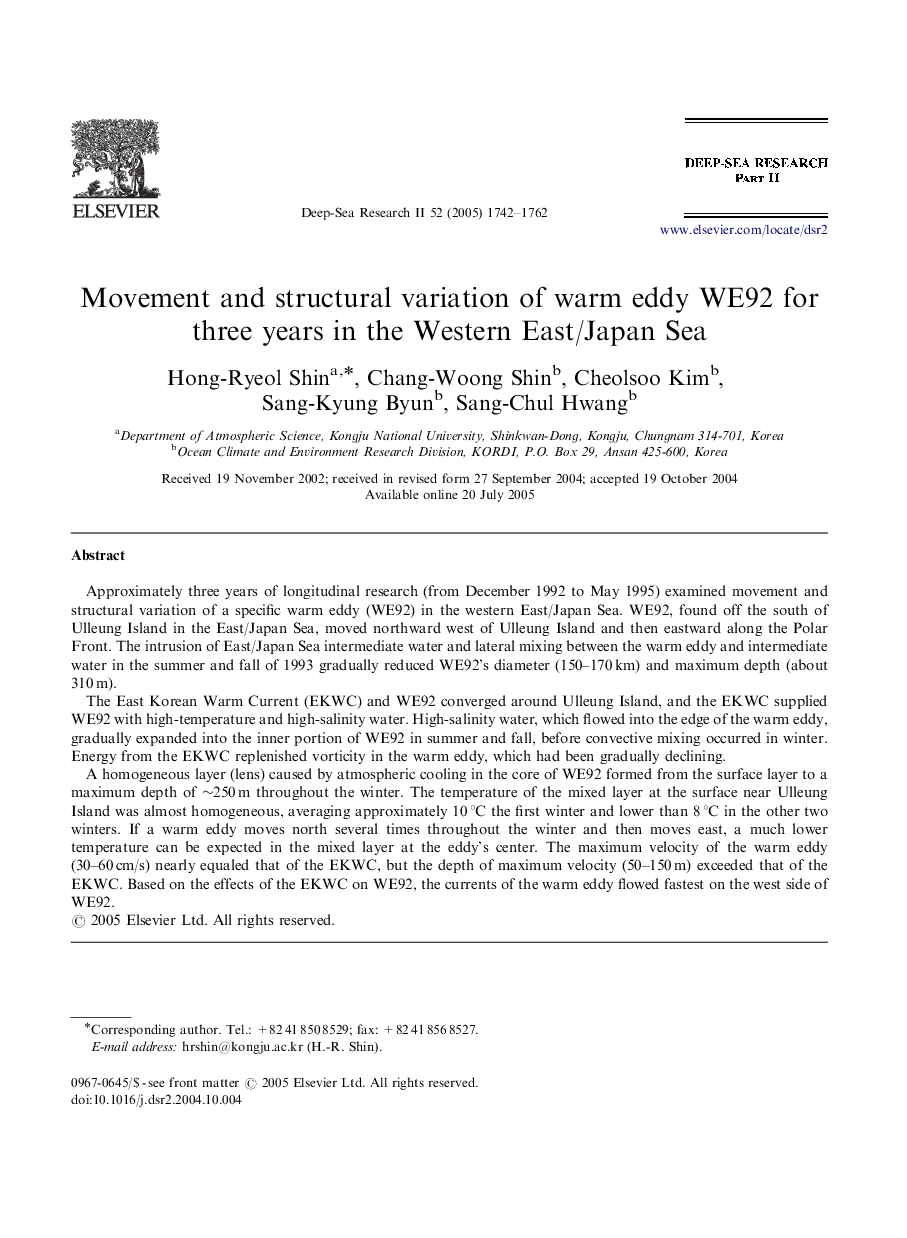| Article ID | Journal | Published Year | Pages | File Type |
|---|---|---|---|---|
| 9480099 | Deep Sea Research Part II: Topical Studies in Oceanography | 2005 | 21 Pages |
Abstract
A homogeneous layer (lens) caused by atmospheric cooling in the core of WE92 formed from the surface layer to a maximum depth of â¼250 m throughout the winter. The temperature of the mixed layer at the surface near Ulleung Island was almost homogeneous, averaging approximately 10 °C the first winter and lower than 8 °C in the other two winters. If a warm eddy moves north several times throughout the winter and then moves east, a much lower temperature can be expected in the mixed layer at the eddy's center. The maximum velocity of the warm eddy (30-60 cm/s) nearly equaled that of the EKWC, but the depth of maximum velocity (50-150 m) exceeded that of the EKWC. Based on the effects of the EKWC on WE92, the currents of the warm eddy flowed fastest on the west side of WE92.
Related Topics
Physical Sciences and Engineering
Earth and Planetary Sciences
Geology
Authors
Hong-Ryeol Shin, Chang-Woong Shin, Cheolsoo Kim, Sang-Kyung Byun, Sang-Chul Hwang,
